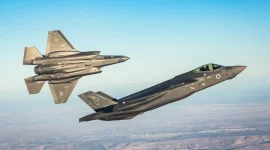- Views: 2K
- Replies: 25
India's recent decision to award the entire Project-75I submarine contract to Mazagon Dock Shipbuilders Limited (MDL) has raised concerns about potential monopoly-related challenges and delays.
Under this project, MDL will construct all six German ThyssenKrupp Marine Systems (TKMS)-designed submarines, solidifying its position as the primary builder of conventional submarines in India. While this approach streamlines production in the near term, it may have unintended consequences for the country's long-term ambitions to develop a competitive and self-reliant defence industrial base.
Critics argue that involving Larsen & Toubro (L&T), a leading Indian private sector defence and engineering company, in the project could have yielded significant strategic and economic benefits. L&T has a proven track record in complex defence projects, including the construction of nuclear submarines and other naval platforms. By allowing L&T to manufacture at least two of the six submarines, the government could have fostered a competitive environment, potentially leading to increased efficiency, innovation, and faster delivery timelines.
Furthermore, diversifying the submarine production base by leveraging L&T's state-of-the-art shipyard could have proven invaluable for future programs like Project-76, which envisions building 12 next-generation conventional submarines. With two manufacturers working concurrently, the Indian Navy's urgent need for modern submarines to counter growing maritime threats could be addressed more effectively.
India's experience with the Project-75 Scorpene submarines, where MDL faced delays and challenges despite receiving technology transfer, highlights the risks associated with a centralized manufacturing model. Introducing competition through private sector participation could mitigate these risks and accelerate the development of indigenous defence manufacturing capabilities, aligning with the government's Atmanirbhar Bharat initiative.
While concerns about potential workflow fragmentation and quality inconsistencies in a dual production model exist, these challenges can be addressed through robust project management, stringent quality control measures, and coordinated oversight by the Ministry of Defence (MoD) and the Indian Navy.
Ultimately, the decision to grant MDL exclusive manufacturing rights under Project-75I may prove to be a missed opportunity to foster a more competitive and resilient defence manufacturing ecosystem in India. By involving L&T, the government could have laid the foundation for a stronger and more self-reliant maritime defence capability in the long run.

